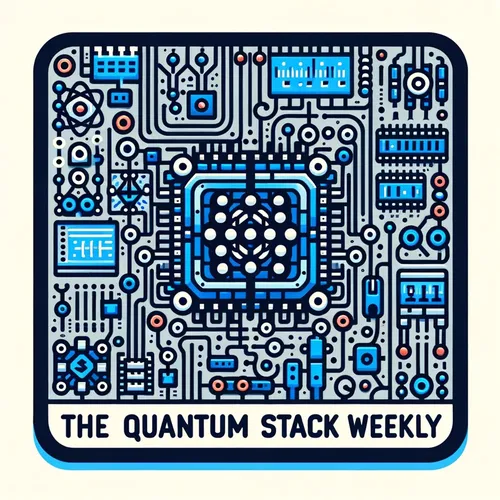Aalto's Quantum Leap: Shattering Coherence Barriers with Superconducting Qubits
- Author
- Quiet. Please
- Published
- Sun 27 Jul 2025
- Episode Link
- https://www.spreaker.com/episode/aalto-s-quantum-leap-shattering-coherence-barriers-with-superconducting-qubits--67143283
This is your The Quantum Stack Weekly podcast.
Picture this: just this week, the soft blue glow of a dilution refrigerator in Finland held what may become the spark that changes everything. I’m Leo, your Learning Enhanced Operator, and today on The Quantum Stack Weekly, we’re not wading through incremental advances—we’re diving into a genuine leap.
On July 24th, physicists at Aalto University announced something breathtaking: their superconducting transmon qubit has smashed through the notorious coherence barrier. Old scientific records capped out at about 0.6 milliseconds. Aalto’s team, led by Mikko Tuokkola and Yoshiki Sunada, now measures their qubit’s echo coherence in the millisecond range. Think of it—a single qubit reliably holding its quantum state, its delicate superposition untangled for over a thousandth of a second. To non-physicists, this might sound fleeting. But in quantum computing, that is an eternity. Each extra fraction of a millisecond is a vast new continent for error-free calculation, for algorithms to flex their muscle without being toppled by the chaos of noise.
Let’s get behind the curtain for a second. Imagine standing inside the Aalto cleanroom, air filtered to a level just shy of sterile, the hum of cryogenics and the sharp smell of superconductors in the air. Here, transmons—a type of superconducting qubit—are laid down with nanometer precision, cooled to near absolute zero, and bombarded with carefully shaped microwave pulses. The battle is always against decoherence: the intrusive buzz of thermal energy, magnetic fields, or mere vibrations that could knock a fragile quantum state out of balance. That’s where this breakthrough stuns—the improvement isn’t from exotic new materials or magic fixes, but rather relentless refinement in fabrication, shielding, and microwave control. In other words, the Aalto team has squeezed every bit of stability from the laws of physics that nature allows.
Why does this matter? Longer coherence means we can execute more quantum logic gates before errors creep in and ruin the computation. It shrinks the mountain that is quantum error correction: with every extension in coherence, the overhead—the number of spare qubits and cycles needed to keep things on track—plummets. If quantum error correction is the shield, long-lived qubits are the armor. Now, for algorithms in chemistry, AI, or cryptography, we just got a much larger and more stable toolkit.
As I watched the announcement, I couldn’t help thinking of current events—of how, like networks of trust evolving across digital society, reliable qubits build trust in a quantum computer’s results. There’s this resonance between making quantum information robust and constructing resilient systems in the wider world, where every extra millisecond or layer of security opens new possibilities.
That’s all for this quantum leap on The Quantum Stack Weekly. If questions or topic requests tumble into your mind, drop me a line at [email protected]. Don’t forget to subscribe and join our community—this has been a Quiet Please Production. For more information, check out quietplease.ai.
For more http://www.quietplease.ai
Get the best deals https://amzn.to/3ODvOta
